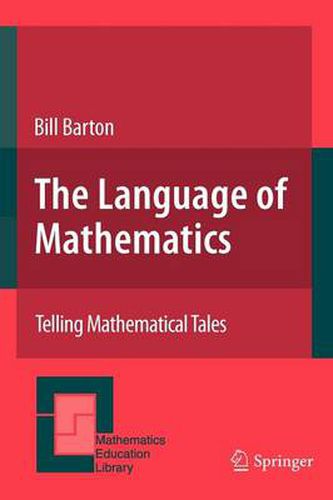Readings Newsletter
Become a Readings Member to make your shopping experience even easier.
Sign in or sign up for free!
You’re not far away from qualifying for FREE standard shipping within Australia
You’ve qualified for FREE standard shipping within Australia
The cart is loading…






This title is printed to order. This book may have been self-published. If so, we cannot guarantee the quality of the content. In the main most books will have gone through the editing process however some may not. We therefore suggest that you be aware of this before ordering this book. If in doubt check either the author or publisher’s details as we are unable to accept any returns unless they are faulty. Please contact us if you have any questions.
The book emerges from several contemporary concerns in mathematics, language, and mathematics education. However, the book takes a different stance with respect to language by combining discussion of linguistics and mathematics using examples from each to illustrate the other. The picture that emerges is of a subject that is much more contingent, much more relative, much more subject to human experience than is usually accepted. Another way of expressing this, is that the thesis of the book takes the idea of mathematics as a human creation, and, using the evidence from language, comes to more radical conclusions than most writers allow.
$9.00 standard shipping within Australia
FREE standard shipping within Australia for orders over $100.00
Express & International shipping calculated at checkout
This title is printed to order. This book may have been self-published. If so, we cannot guarantee the quality of the content. In the main most books will have gone through the editing process however some may not. We therefore suggest that you be aware of this before ordering this book. If in doubt check either the author or publisher’s details as we are unable to accept any returns unless they are faulty. Please contact us if you have any questions.
The book emerges from several contemporary concerns in mathematics, language, and mathematics education. However, the book takes a different stance with respect to language by combining discussion of linguistics and mathematics using examples from each to illustrate the other. The picture that emerges is of a subject that is much more contingent, much more relative, much more subject to human experience than is usually accepted. Another way of expressing this, is that the thesis of the book takes the idea of mathematics as a human creation, and, using the evidence from language, comes to more radical conclusions than most writers allow.